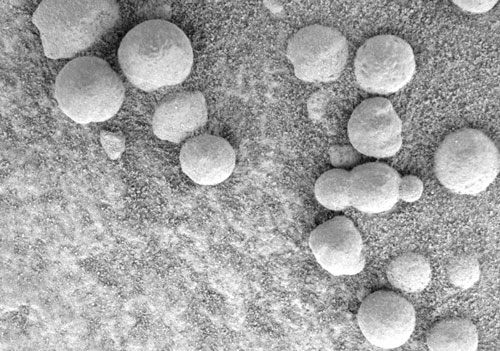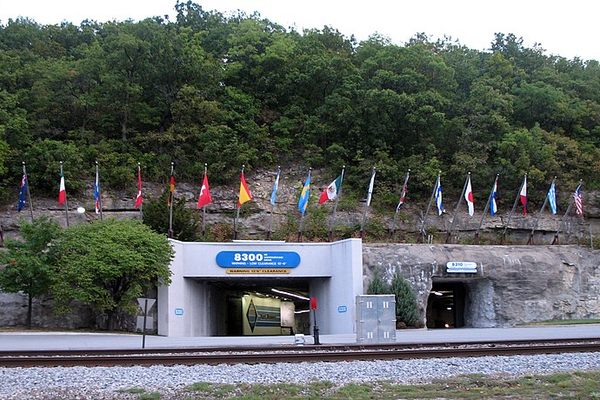What’s Causing These Egg-Shaped Rocks to Form on a Cliff in China?
Locals collect them for good luck.

In southwest China, near the village of Gulu, there’s a cliff that has a mysterious talent. It lays eggs. More precisely, beautifully round, egg-like rocks stud its face, MetroUK reports. Eventually, over the course of about three decades, those rocks emerge until they drop from the cliff face to the ground—smooth and nearly spherical.
In pictures, the cliff looks like it’s decorated with candy buttons or developed a strange skin disease. The rocks themselves are like the large versions of the silky pebbles on a beach or riverbed. Locals consider them good luck and collect them when they fall, but no one has known what, exactly, is responsible for this phenomenon.

According to MetroUK, experts have now analyzed this section of cliff and found that it’s made of calcareous rock—sedimentary rock that is chalky, with a high proportion of calcium carbonate. Erosion patterns may be responsible for forming the egg-shaped rocks, they think, but the precise geological mechanism at the cliff hasn’t been determined.

Sedimentary rocks are known to form what are called concretions, in which a mineral cement holds sandy particles together. Under the right conditions, these concretions can form particularly round rocks that emerge when the less durable material around them erodes. Often they’re much larger than the Chinese example, and found on horizontal planes rather than vertical cliffs. But they range widely: a forest in Arkansas, a beach in New Zealand, and on Mars.



































Follow us on Twitter to get the latest on the world's hidden wonders.
Like us on Facebook to get the latest on the world's hidden wonders.
Follow us on Twitter Like us on Facebook